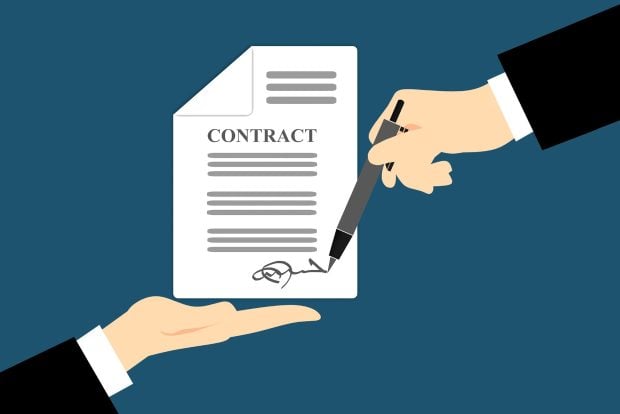Spend it wisely, part 2: the digital marketplace

Government procurement systems are being transformed by a new wave of digital marketplaces and buyer-vendor matchmaking platforms. James Johns examines the new channels open to civil servants charged with buying in goods and services
Central government procurement systems have long come under fire – with suppliers and commentators criticising onerous bidding processes, a tendency to favour big, established suppliers, and their focus on price rather than value. But the introduction of digital technologies, a wave of civil service reforms, and the growing professionalism of government procurement staff are fostering a new wave of procurement systems.
In the first part of this report, I examined some of the new services designed to reduce duplication, simplify data requirements and streamline transactions with contractors. But the greatest rewards lie in wholesale transformation of procurement practices – often using digital purchasing platforms. In its 2016 report ‘Cloud 9: The future of public procurement’, the London-based think tank Reform estimated that the UK could achieve savings of up to £10bn (US£13bn) per year if it was able to drive similar volumes of spend through digital channels as Estonia and South Korea, whose governments use e-Procurement for 50% and 64.3% of their purchasing respectively.
The savings enabled through digital procurement go beyond simply securing a better deal on each purchase. Drawing on examples from the consumer goods sector (a hotbed of innovation in purchasing, due to its highly competitive nature), consultants McKinsey have described the potential of digital systems as providing a “supplier x-ray” which can improve the visibility of spend, helping purchasers to identify new opportunities to add value, support collaborative procurement and prevent value leakage in their supply chains.
Buyer-supplier matchmaking
Alongside the traditional suppliers of e-Procurement platforms, there is also clear space in the market for digital companies to take a more active role in matchmaking between public bodies and suppliers. In the UK, Public, a company founded by a former advisor to prime minister David Cameron, runs a Growth Programme called GovStart that helps civic tech start-ups to sell to governments. Participants receive support from a team of experienced advisors from the worlds of technology, politics and procurement.
In a similar vein, New York based CityMart specialises in “problem-based procurement”. The firm connects city authorities experiencing specific problems with innovative small companies able to provide solutions. CityMart claims to have built a repository of more than 16,000 services, addressing challenges across fields from urban lighting and traffic safety to adult social care and public health. Its platform has been used by more than 60 cities in 25 countries, including New York, London, Dublin and Paris.
And the benefits of digital marketplaces are not only available to purchasers. In February 2018, UK-based Tenderlake launched its ‘genius’ service. This uses artificial intelligence to scan company websites for descriptions of their products and services, then automatically searches public domain databases for government procurement opportunities which match these – generating a stream of prospects against which the company can bid. Whilst this example is relatively benign (most buyers would welcome additional qualified bidders), it highlights the asymmetry that could arise if governments fail to embrace digital at the same rate as their suppliers.
Opening markets: G-Cloud and the Digital Marketplace
The complaint about overly-concentrated markets is a frequently-heard one amongst critics of public contracting. Competition law specialists would tell us that in the ‘bidding markets’ typically used for public procurements, only a small number of competitors are needed in any given competition for the market to be regarded as contestable. Nevertheless, the perception that markets are dominated by an oligopoly of suppliers persists. Never has a politician been so determined to disrupt this situation as Francis Maude, the UK’s Minister for the Cabinet Office from 2010 to 2015. He was responsible for introducing a series of procurement reforms, including the G-Cloud.
Initially launched in 2012 to provide a mechanism for public sector organisations to buy Cloud Computing services, it has rapidly become the default pathway for all small and medium-scale technology procurements. G-Cloud comprises a series of framework contracts and an associated website – the Digital Marketplace – through which buyers select suppliers. The underpinning framework contracts have been renewed every six to nine months since launch.

The UK Government’s Digital Marketplace is an online portal to nearly 20,000 technology services and products from more than 2,800 suppliers (Image courtesy: digitalmarketplace.blog.gov.uk).
G-Cloud was designed to open up the government market for technology services by reducing the administrative burden for both buyers and sellers. Compared to a full European Journal-style procurement, the bar for suppliers to get on the framework is relatively low (and documented online). Suppliers provide a fairly small amount of company information and populate pro-forma descriptions of their services. Buyers use the digital marketplace (which also acts as a front-end for other centrally-procured framework contracts, including those for digital specialists and datacentre services) to search for suppliers meeting the criteria for their specific procurement, and enter into a contract based on a combination of supplier-defined and centrally-mandated terms.
Happy shoppers
The service has not been without its detractors. Some buyers have complained that the call-off period – the time over which services will be provided, set at 24 months – written into the frameworks is too short, and some suppliers have invested in securing a place on the framework but seen little or no business. Critics have also pointed out that relatively little of the spend through the framework is actually related to cloud computing services.
Nevertheless, it is difficult to view G-Cloud as anything other than a major success. The most recent purchasing round (G-Cloud 9) saw 2,856 successful applications covering nearly 20,000 services. By the end of 2017, G-Cloud had seen total sales of £2.85bn (US$3.8bn), with 48% of sales by value and 71% by volume won by Small and Medium-Sized Enterprises (SMEs). The framework featuring suppliers successful in the tenth procurement round is intended to go live next month.
Alongside the introduction of G-Cloud, Maude’s Cabinet Office also launched the Contracts Finder Website. This publicises all government contracts worth more than £10,000 (US$13,400), and can therefore be considered a supply-side sister to the digital marketplace – signposting suppliers to opportunities they might pursue.
Opening up the online marketplace
Both G-Cloud and the Digital Marketplace have stimulated similar initiatives elsewhere in the world, and the UK’s Foreign and Commonwealth Office has allocated funds to support their rollout by other countries – recognising this as an export opportunity for suppliers with expertise in the UK model.
Australia, Canada, Chile and New Zealand have reportedly drawn inspiration from these innovations – looking to both the UK, and other digital procurement pioneers. For example, the Norwegian Government’s equivalent to Contract Finder, Doffin, which publicises procurement opportunities valued at more than NOK 1.1m (US$141,000), went live in 2005, pre-dating its British cousin by some six years
When public procurement is costly, bureaucratic and uncompetitive, the costs don’t just fall on suppliers; they are passed on to customers (and hence taxpayers) in the form of higher prices. Measures such as these reduce the administrative burden, open up markets, and make it easier for public bodies to find the right solutions. Talking about innovation in procurement might be less sexy than talking about the procurement of innovation. But it’s far from a fruitless exercise.
This is the second section of a two-part report. You can read the first part here.





















